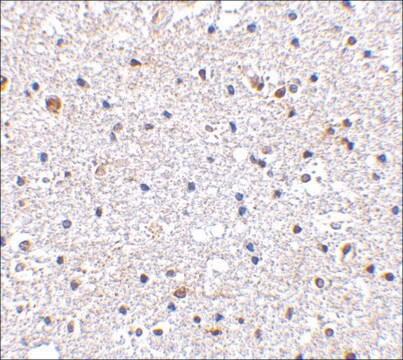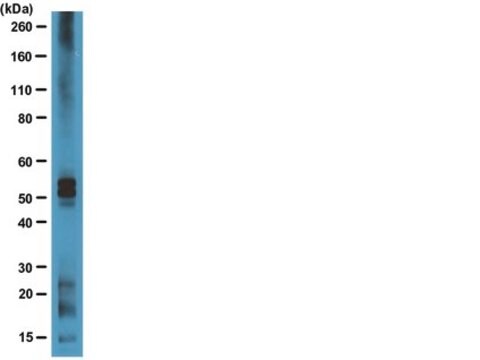추천 제품
제품명
Anti-Tau (T22), oligomeric Antibody, serum, from rabbit
생물학적 소스
rabbit
Quality Level
항체 형태
serum
항체 생산 유형
primary antibodies
클론
polyclonal
종 반응성
human
기술
ELISA: suitable
dot blot: suitable
immunofluorescence: suitable
immunohistochemistry: suitable
immunoprecipitation (IP): suitable
neutralization: suitable
western blot: suitable
NCBI 수납 번호
UniProt 수납 번호
배송 상태
wet ice
타겟 번역 후 변형
unmodified
유전자 정보
human ... MAPT(4137)
일반 설명
Microtubule-associated protein tau (UniProt P10636; also known as Neurofibrillary tangle protein, Paired helical filament-tau, PHF-tau) is encoded by the MAPT (also known as TAU, MAPT1, MTBTL) gene (Gene ID 4137) in human. In Alzheimer′s disease (AD) pathology, accumulation of the microtubule-associated protein tau takes place primarily in the neurons. Tau accumulates in both the somatodendritic and axonal domains of neurons. Tau also accumulates in the soma as neurofibrillary tangles (NFTs). Cell death and synaptic lesions occur independently of NFT formation, and research indicates that NFT formation alone is insufficient for neurodegeneration, suggesting that soluble tau aggregates may be the more toxic and pathologically significant tau species. Tau oligomers are neurotoxic when applied extracellularly to cultured neuronal cells, and tau oligomers (but not fibrils) induce neurodegeneration and synaptic and mitochondrial dysfunction in vivo. Moreove, researchers are able to use tau oligomers as a reliable biomarker to differentiate AD brains from age-matched non-AD brains.
특이성
T22 specifically recognizes and neutralizes oligomeric tau, T22 does not show any significant reactivity toward monomeric tau, tau fibrils, Aβ oligomers, Aβ fibrils, α-synuclein oligomers, or α-synuclein fibrils (Lasagna-Reeves, C. A., et al. (2012). FASEB J. 26(5):1946-1959).
면역원
Recombinant human Tau-441 (Tau-F, Tau-4, 2N4R isoform) oligomers (Lasagna-Reeves, C. A., et al. (2012). FASEB J. 26(5):1946-1959).
애플리케이션
Dot Blot (Specificity) Analysis: A 1:1,000 dilution from a representative lot detected oligomeric tau, but not monomeric tau or tau fibrils.
Immunohistochemistry Analysis: A 1:245-1,000 dilution from a representative lot detected tau oligomers in frontal cortices from Alzheimer′s Diseased (AD) and Lewy Body Diseased (LBD) patients (Courtesy of Prof. Rakez Kayed, University of Texas, Galveston).
Immunofluorescence Analysis: A representative lot detected oligomeric tau in chronic traumatic encephalopathy (CTE) brain tissue sections, while little or no tau oligomer immunoreactivity was seen in non-CTE human brain sections. The tau oligomer immunoreactivity colocalized with that of tau pThr231 with a cis conformation, but not tau pThr231 with a trans conformation, between pThr231 and Pro232 (Kondo, A., et al. (2015). Nature. 523(7561):431-436).
Immunofluorescence Analysis: A representative lot detected oligomeric tau immunoreactivity in paraffin-embedded frontal cortex sections from Alzheimer′s diseased (AD) brains (Lasagna-Reeves, C. A., et al. (2012). FASEB J. 26(5):1946-1959).
Western Blotting Analysis: A 1:1,000 dilution from a representative lot detected oligomeric tau in chronic traumatic encephalopathy (CTE) in Tau Aggregate lysate.
Western Blotting Analysis: Representative lots detected oligomeric tau, but not monomeric tau, or any other oligomeric and fibrillar proteins (Wu J.W., et al. (2013). J. Biol. Chem. 288(3):1856-1870; Lasagna-Reeves, C. A., et al. (2012). FASEB J. 26(5):1946-1959).
Dot Blot Analysis: A representative lot detected tau oligomers, but not tau monomer or paired helical filaments (PHFs) (Lasagna-Reeves, C. A., et al. (2012). FASEB J. 26(5):1946-1959).
ELISA Analysis: Representative lots detected vitro formed tau oligomers as well as tau oligomers in PBS-soluble brain extracts from progressive supranuclear palsy (PSP) patients (Lasagna-Reeves, C.A., et al. (2012). Sci. Rep. 2:700; Lasagna-Reeves, C. A., et al. (2012). FASEB J. 26(5):1946-1959).
ELISA Analysis: A representative lot showed selective reactivity toward oligomeric tau, while exhibiting greatly reduced immunoreactivity toward tau fibrils, and no reactivity toward monomeric tau, or other protein oligomers or fibrils (e.g., Aβ, α-synuclein, or islet amyloid polypeptide) (Lasagna-Reeves, C. A., et al. (2012). FASEB J. 26(5):1946-1959).
Immunoprecipitation Analysis: Representative lots immunoprecipitated oligomeric tau from Alzheimer′s Diseased (AD), but not non-AD brains (Lasagna-Reeves, C.A., et al. (2012). Sci. Rep. 2:700; Lasagna-Reeves, C. A., et al. (2012). FASEB J. 26(5):1946-1959).
Neutralizing Analysis: Representative lots neutralized oligomeric tau toxicity to SH-SY5Y human neuroblastoma cells (Lasagna-Reeves, C.A., et al. (2012). Sci. Rep. 2:700; Lasagna-Reeves, C. A., et al. (2012). FASEB J. 26(5):1946-1959).
Immunohistochemistry Analysis: A representative lot detected oligomeric tau immunoreactivity in paraffin-embedded brain sections from progressive supranuclear palsy (PSP) patients (Lasagna-Reeves, C. A., et al. (2012). FASEB J. 26(5):1946-1959).
Immunohistochemistry Analysis: A 1:245-1,000 dilution from a representative lot detected tau oligomers in frontal cortices from Alzheimer′s Diseased (AD) and Lewy Body Diseased (LBD) patients (Courtesy of Prof. Rakez Kayed, University of Texas, Galveston).
Immunofluorescence Analysis: A representative lot detected oligomeric tau in chronic traumatic encephalopathy (CTE) brain tissue sections, while little or no tau oligomer immunoreactivity was seen in non-CTE human brain sections. The tau oligomer immunoreactivity colocalized with that of tau pThr231 with a cis conformation, but not tau pThr231 with a trans conformation, between pThr231 and Pro232 (Kondo, A., et al. (2015). Nature. 523(7561):431-436).
Immunofluorescence Analysis: A representative lot detected oligomeric tau immunoreactivity in paraffin-embedded frontal cortex sections from Alzheimer′s diseased (AD) brains (Lasagna-Reeves, C. A., et al. (2012). FASEB J. 26(5):1946-1959).
Western Blotting Analysis: A 1:1,000 dilution from a representative lot detected oligomeric tau in chronic traumatic encephalopathy (CTE) in Tau Aggregate lysate.
Western Blotting Analysis: Representative lots detected oligomeric tau, but not monomeric tau, or any other oligomeric and fibrillar proteins (Wu J.W., et al. (2013). J. Biol. Chem. 288(3):1856-1870; Lasagna-Reeves, C. A., et al. (2012). FASEB J. 26(5):1946-1959).
Dot Blot Analysis: A representative lot detected tau oligomers, but not tau monomer or paired helical filaments (PHFs) (Lasagna-Reeves, C. A., et al. (2012). FASEB J. 26(5):1946-1959).
ELISA Analysis: Representative lots detected vitro formed tau oligomers as well as tau oligomers in PBS-soluble brain extracts from progressive supranuclear palsy (PSP) patients (Lasagna-Reeves, C.A., et al. (2012). Sci. Rep. 2:700; Lasagna-Reeves, C. A., et al. (2012). FASEB J. 26(5):1946-1959).
ELISA Analysis: A representative lot showed selective reactivity toward oligomeric tau, while exhibiting greatly reduced immunoreactivity toward tau fibrils, and no reactivity toward monomeric tau, or other protein oligomers or fibrils (e.g., Aβ, α-synuclein, or islet amyloid polypeptide) (Lasagna-Reeves, C. A., et al. (2012). FASEB J. 26(5):1946-1959).
Immunoprecipitation Analysis: Representative lots immunoprecipitated oligomeric tau from Alzheimer′s Diseased (AD), but not non-AD brains (Lasagna-Reeves, C.A., et al. (2012). Sci. Rep. 2:700; Lasagna-Reeves, C. A., et al. (2012). FASEB J. 26(5):1946-1959).
Neutralizing Analysis: Representative lots neutralized oligomeric tau toxicity to SH-SY5Y human neuroblastoma cells (Lasagna-Reeves, C.A., et al. (2012). Sci. Rep. 2:700; Lasagna-Reeves, C. A., et al. (2012). FASEB J. 26(5):1946-1959).
Immunohistochemistry Analysis: A representative lot detected oligomeric tau immunoreactivity in paraffin-embedded brain sections from progressive supranuclear palsy (PSP) patients (Lasagna-Reeves, C. A., et al. (2012). FASEB J. 26(5):1946-1959).
Research Category
Neuroscience
Neuroscience
Research Sub Category
Neurodegenerative Diseases
Neurodegenerative Diseases
This Anti-Tau (T22) antibody, oligomeric is validated for use in Dot Blot, ELISA, Immunofluorescence, Immunohistochemistry, Immunoprecipitation, Neutralization, and Western blotting.
품질
Evaluated by Western Blotting in human brain tissue lysates.
Western Blotting Analysis: A 1:1,000 dilution of this antibody detected tau oligomers in Alzheimer′s diseased (AD), but not non-AD, human brain tissue lysate.
Western Blotting Analysis: A 1:1,000 dilution of this antibody detected tau oligomers in Alzheimer′s diseased (AD), but not non-AD, human brain tissue lysate.
표적 설명
Variable depending on the size(s) of the oligomer(s).
물리적 형태
Rabbit polyclonal serum containing 0.02% sodium azide.
Unpurified
저장 및 안정성
Stable for 1 year at -20°C from date of receipt.
Handling Recommendations: Upon receipt and prior to removing the cap, centrifuge the vial and gently mix the solution. Aliquot into microcentrifuge tubes and store at -20°C. Avoid repeated freeze/thaw cycles, which may damage IgG and affect product performance.
Handling Recommendations: Upon receipt and prior to removing the cap, centrifuge the vial and gently mix the solution. Aliquot into microcentrifuge tubes and store at -20°C. Avoid repeated freeze/thaw cycles, which may damage IgG and affect product performance.
면책조항
Unless otherwise stated in our catalog or other company documentation accompanying the product(s), our products are intended for research use only and are not to be used for any other purpose, which includes but is not limited to, unauthorized commercial uses, in vitro diagnostic uses, ex vivo or in vivo therapeutic uses or any type of consumption or application to humans or animals.
적합한 제품을 찾을 수 없으신가요?
당사의 제품 선택기 도구.을(를) 시도해 보세요.
Storage Class Code
10 - Combustible liquids
WGK
WGK 1
시험 성적서(COA)
제품의 로트/배치 번호를 입력하여 시험 성적서(COA)을 검색하십시오. 로트 및 배치 번호는 제품 라벨에 있는 ‘로트’ 또는 ‘배치’라는 용어 뒤에서 찾을 수 있습니다.
Cristian A Lasagna-Reeves et al.
FASEB journal : official publication of the Federation of American Societies for Experimental Biology, 26(5), 1946-1959 (2012-01-19)
Neurofibrillary tangles (NFTs) are a pathological hallmark of Alzheimer's disease (AD); however, the relationship between NFTs and disease progression remains controversial. Analyses of tau animal models suggest that phenotypes coincide with accumulation of soluble aggregated tau species but not the
Jessica W Wu et al.
The Journal of biological chemistry, 288(3), 1856-1870 (2012-11-29)
The accumulation of Tau into aggregates is associated with key pathological events in frontotemporal lobe degeneration (FTD-Tau) and Alzheimer disease (AD). Recent data have shown that misfolded Tau can be internalized by cells in vitro (Frost, B., Jacks, R. L.
Alzheimer brain-derived tau oligomers propagate pathology from endogenous tau.
Lasagna-Reeves, CA; Castillo-Carranza, DL; Sengupta, U; Guerrero-Munoz, MJ; Kiritoshi et al.
Scientific Reports null
Laura J Blair et al.
The Journal of clinical investigation, 123(10), 4158-4169 (2013-09-04)
Aggregation of tau protein in the brain is associated with a class of neurodegenerative diseases known as tauopathies. FK506 binding protein 51 kDa (FKBP51, encoded by FKBP5) forms a mature chaperone complex with Hsp90 that prevents tau degradation. In this
Ron Balczon et al.
FASEB journal : official publication of the Federation of American Societies for Experimental Biology, 35(9), e21807-e21807 (2021-08-13)
Pneumonia causes short- and long-term cognitive dysfunction in a high proportion of patients, although the mechanism(s) responsible for this effect are unknown. Here, we tested the hypothesis that pneumonia-elicited cytotoxic amyloid and tau variants: (1) are present in the circulation
자사의 과학자팀은 생명 과학, 재료 과학, 화학 합성, 크로마토그래피, 분석 및 기타 많은 영역을 포함한 모든 과학 분야에 경험이 있습니다..
고객지원팀으로 연락바랍니다.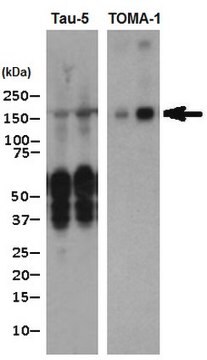
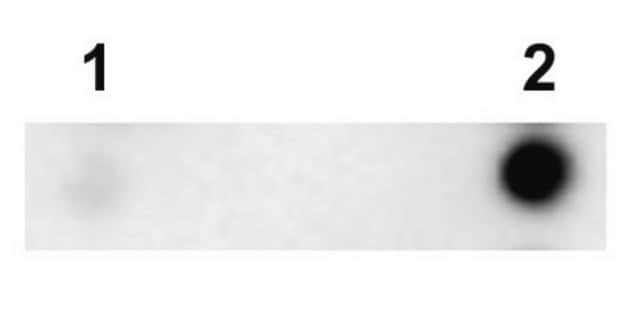
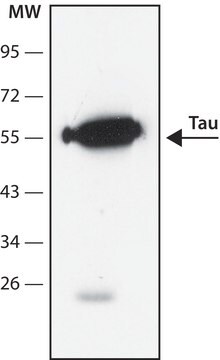
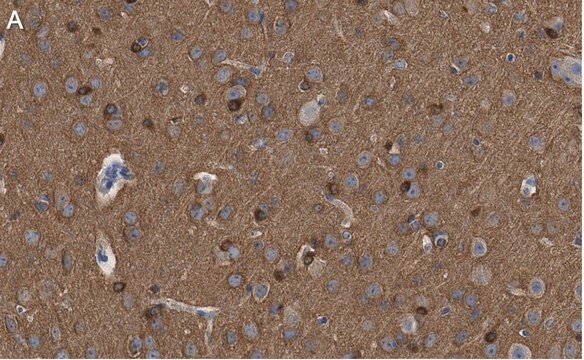
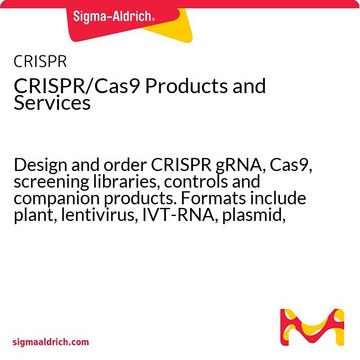
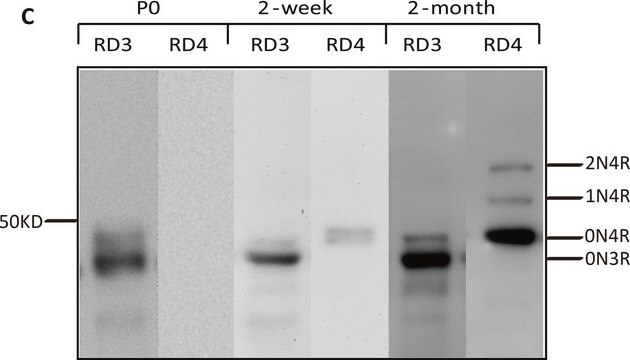
![3-[1,3-Dihydro-4-(5-hydroxy-1-pentyn-1-yl)-1-oxo-2H-isoindol-2-yl]-2,6-piperidinedione ≥95.0%](/deepweb/assets/sigmaaldrich/product/structures/165/184/ebc29f1b-f63f-4e48-afb5-b3aa4c69795a/640/ebc29f1b-f63f-4e48-afb5-b3aa4c69795a.png)
